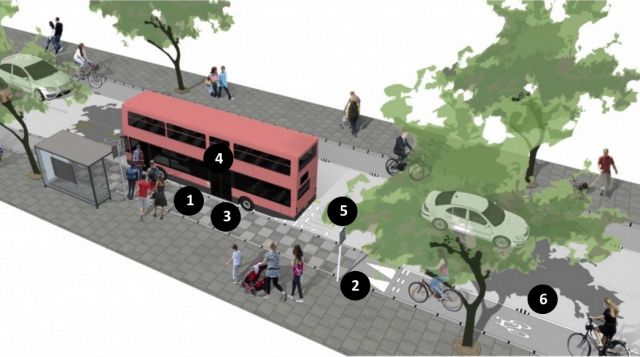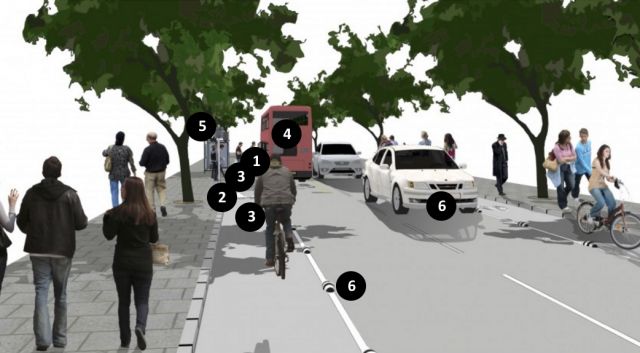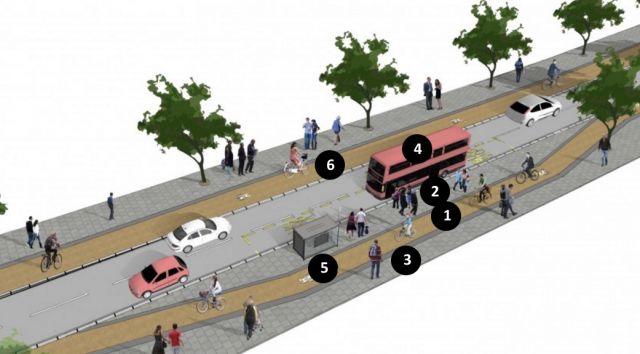Text and images (with some slight reformatting) taken from the Cycle Enfield website and the A105 Consultation Report.
The bus stop bypass and bus stop boarder designs that are proposed have been used in other parts of London and the UK. There are a number of councils who have implemented these designs (e.g. Camden Council and Brighton & Hove Council) who have monitored their impact and have not reported any significant issues.
Whilst it is acknowledged that this is a design not previously seen in Enfield, it is apparent from the consultation comments there are some misunderstanding of how the bus stop boarders will work. To better illustrate the layout of bus stops a detailed explanation has been added to the Cycle Enfield website.
A buffer strip (at pavement height) will be introduced at 22 of the bus stop boarders, creating an additional space between the bus and the cycle lane, 6 bus stop boarders will remain as the original design.
We have produced an illustration to help better illustrate how bus stop boarders will be designed, as from the comments received it is clear that there were some misunderstanding of how this would work. This illustration shows that bus users will not have to jump down from the bus into the cycle lane and then up onto the pavement. The design of these areas will ensure that pedestrians have priority, extending the pavement area across the cycle lane. This design will now be developed further by the introduction of the buffer strips.


- Bus stop boarder area designed with appropriate material differences, signs and ramp to indicate that cyclists should give priority to bus users
- The ramp before the bus stop will have an appropriate gradient, material and markings to encourage cyclists to slow down. Cyclists will have to give priority to bus users.
- Bus passengers board and alight from area which is the same level as the footway.
- The bus is able to stop directly alongside the stop due to no obstructions.
- Sign showing that cyclists have to give priority to bus stop users.
- Light segregation on approach to protect cyclists

- Bus stop bypass designed with different material and signs to indicate that cyclist should bypass the bus stop area
- Passengers wait in footway area between cycle lane and carriageway.
- Clear footway kept separate from cycle lane behind bus stop for through pedestrian movement.
- The bus is able to stop directly alongside the stop due to no obstructions.
- Cycle route and pavement materials different and cycle symbols incorporated to show cycle route.
- Cycle lane separated from general vehicle route.



